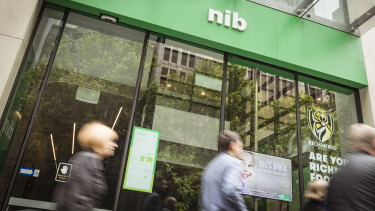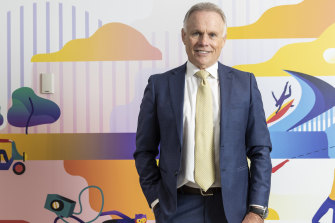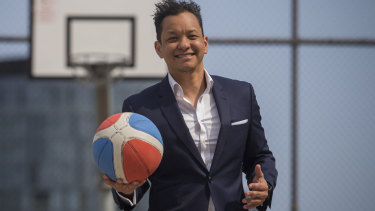‘Another level’: Insurers chase data as sector fights for relevance
As private health insurers battled elective surgery shutdowns, shrinking margins and economic uncertainties throughout 2020, funds started discussing data science in more detail — and pinning hopes on digital engagement to turn around their fortunes.
The health insurance sector, which research firm Ibisworld estimates was worth $25 billion in 2020, had initially expected the COVID-19 lockdowns to translate into extra profits. Funds had predicted restrictions on elective surgery would result in fewer of these claims being made, putting insurers in a better financial position throughout 2020.
However, those expectation were dashed when a restart of allied health and surgeries forced funds to add “deferred claims” provisions to their 2020 balance sheets.

Meanwhile, quarterly data from the Australian Prudential and Regulatory Authority (APRA) suggested margins for the industry were shrinking further as younger Australians ditched the private health system in droves. As of the September 2020 quarter, the net margin across the sector sat at just over 2 per cent.
Hospital memberships were up 0.3 per cent for the quarter, but the gains came from older Australians, while more than 9000 younger Australians left the system.
Against this backdrop, funds have been determined to use technology to better engage with their members, as well as collecting information that could help their members manage claims better over the long term.

“We’re spending much more [on] data on data science to identify risk based on profiles,” says chief executive of nib Group, Mark Fitzgibbon.
All funds want to target their offers better, but it can be an expensive process.
“Unless you are very precise about it, you can end up spending a lot of money on people who are not that much at risk,” Fitzgibbon says.
Nib has had a strong focus on data over the past year, after announcing a $20 million joint venture with insurance giant Cigna in December 2019.
The deal saw the establishment of Honeysuckle Health, a data science business that collects “as much data as it possibly can about you” to measure risk of disease and help with preventative health planning for nib members. It currently has 80 staff based in Newcastle and nib is its key customer – however, Fitzgibbon hopes in time other health insurers may be able to tap into the company’s tools for their own members.
“Technology is driving health and longevity. Data science has taken us to another level,” he says.
That data science only works if members buy in, however: without consent to share information with funds, the equation doesn’t work.
“Nobody is ever going to be forced to share their data. Honeysuckle Health has been through the ringer in terms of privacy. But members have to believe the reward is worth the risk [of sharing]. They have to have trust and faith that it will work.”
Meanwhile, AIA Insurance chief executive Damien Mu says his fund is focused on incentivising members to take “small steps to improve their health”.
“We adhere to the strictest data privacy guidelines. We do not use members’ data collected through AIA Vitality in our insurance underwriting,” he says.
The Hong-Kong listed insurer is trying to get its members engaged with preventative screenings and health checks through its Vitality app, however. Its offers include online health check tools and the ability to link their health trackers through to the app.

The fund says the online offers have helped shape its offer for younger members. “This is particularly true for engaging younger members, with data collected through AIA Vitality enabling us to shape and inform the way we incentivise and deliver specific initiatives that appeal directly to this younger demographic,” Wu says.
Digital-first
Beyond data collection, the way that funds capture new members is also starting to change. Earlier in 2020, Medibank boss Craig Drummond told this masthead that the ASX-listed fund was seeing online channels overtake its bricks-and-mortar shopfronts when it comes to selling new memberships.
The rise of telehealth throughout the pandemic has also seen funds extend extras coverage to digital health services. Bupa’s managing director of health insurance Emily Amos welcomed the federal government’s decision in November to make telehealth coverage permanent.
“Leveraging the flexibility that comes with remote healthcare is vital for attracting tech-savvy young Australians to private health insurance,” she says.
Whether these extras are enough to entice cash-strapped Australians into the system remains to be seen.
“Young people have a lot of pressures on them at the moment,” chief executive of Private Healthcare Australia, Dr Rachel David, says.
The federal government is set to review regulation of the sector into 2021, including considering whether the policies like private health insurance rebate are working.
“One thing we are looking at is it is possible to give young people a bigger discount for the entry level product,” David says.
However, she questions whether discounts by themselves is enough to bring in new members.
“My personal view is that doing that [discounts] is not enough in isolation.”
Business Briefing
Start the day with major stories, exclusive coverage and expert opinion from our leading business journalists delivered to your inbox. Sign up here.
Emma reports on healthcare companies for The Age and Sydney Morning Herald. She is based in Melbourne.
Most Viewed in Business
Source: Thanks smh.com